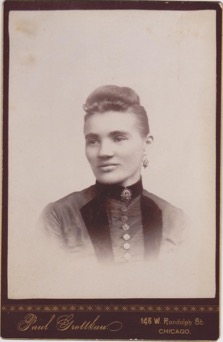 [When, several years ago, my friend and colleague Colleen Thornton introduced me to the research she had begun based on a photograph she purchased on eBay, I offered her as much space as she needed at the blog for publication of her results.
[When, several years ago, my friend and colleague Colleen Thornton introduced me to the research she had begun based on a photograph she purchased on eBay, I offered her as much space as she needed at the blog for publication of her results.
Continuing below, the outcome of Thornton’s painstaking inquiry introduces to the medium’s history two extraordinary figures: a German-born 19th-century U.S.-based anarcho-socialist photographer, Paul Grottkau, and his subject, the African-American anarcho-socialist Lucy Parsons, widow of one of the men railroaded to public hanging in the prosecution of the suspects of the Chicago Haymarket Riot. In the cabinet portrait that Thornton discovered the destinies of these two notable left-wing figures intersect, as her essay makes clear.
Unlike the Capa D-Day project here at the blog, which functions as the running journal or diary of an ongoing investigation, Thornton offers a self-contained, persuasive, and compelling analysis, a prime example of what close attention to individual photographs can reveal. This is a first-rate work of scholarship, and a significant addition to the literature. It marks the blog’s first (but perhaps not last) publication of a fully resolved piece of research.
Thornton’s article as written comes in two parts. I will publish each part in three installments — Part I this week, Part II early in August. Click here for the first installment of Part I, and here for the second installment. — A.D.C.]
•
Paul Grottkau: Anarchist Photographer, Part I
by Colleen Thornton (conclusion)
•
After Chicago – Milwaukee to Detroit to San Francisco
… Sometime in 1889, Paul Grottkau again left Chicago with his family and tried, in short order, to establish photography businesses in both Milwaukee and Detroit, ultimately settling in San Francisco in 1891.
The Friday, July 19th, 1890, edition of the Milwaukee Daily Journal reported that Grottkau had closed his photography studio there and moved to Detroit, Michigan. The article, “Grottkau Going Away,” with the subhead “Milwaukee Labor Agitator to Take Up his Residence in Detroit,” states that he had purchased a photography studio in Detroit, induced to move there because a new German-language labor newspaper, Tageblatt,[1] would provide him an editorial position. But because his “popularity [among the] laboring people” in Milwaukee had soured, “even his business venture had become insecure on account of the lack of customers,” the article claimed.[2]
This article seems to imply that Grottkau’s customers for photographic portraits were the very workers he sought to mobilize and unionize, but that political estrangement had effectively ruined his photography business in Wisconsin. In the wake of the Bay View Massacre, did the negative consequences felt by the local community alienate Grottkau’s customers and drive him out of business?
This raises an intriguing question: Was Paul Grottkau, as a working professional photographer, intentionally creating a visual record of the working people and activist colleagues who were participating in the labor movement that he was so fervently attempting to lead?
•
The David V. Tinder Collection of Michigan Photography, at the William L. Clements Library of the University of Michigan, holds 11 photographs by Grottkau. These cabinet-card photographs are all portraits of individuals and family groups. Only two are partially identified by handwritten inscriptions (“Alice” and “Grandpa Virgin”). One photo is there in duplicate, so actually there are ten images. The sitters appear to be working-class people of Northern European heritage, plainly dressed, without much in the way of fashionable embellishments or jewelry, ranging in age from infancy to old age.
The group of images include a jolly, smiling baby in a christening gown, with someone crouched behind the chair; an elderly widow in full funeral attire; a family group of proud parents and their four youngsters; three siblings dressed in their Sunday best, perched on props and glowering at the camera like members of the Addams Family; a woman (“Alice”) standing awkwardly, right arm resting on the chair with her right hand holding a closed fan and the left limply dangling; a morose mother sitting, with her toddler perched on the chair arm; a portly middle-aged man seen in three-quarter profile smoking a long clay pipe, elbows bent, slightly disheveled and looking quite pleased with himself; a care-worn old man with a long goatee staring off into space (“Grandpa Virgin”); two head shots of very similar-looking, smartly dressed young men seemingly poised for their futures. (There is a facial resemblance between the care-worn gentleman and the serious young man; could they be related?)
Portrait photos were taken to mark life’s milestones, such as the headshot of a young man dressed for a special occasion, wearing a camellia-and-orange-blossom boutonnière on the left lapel. This indicates a wedding photo. His facial features and hair style are so similar to the shot of the other young man it is hard to determine if this is the same person or perhaps his brother.
And while it was not customary to smile outright, some of Grottkau’s adult sitters convey a stoic weariness and sense of tribulation; the children seem wary of the camera or bored by the tedium of posing. Only the gleeful baby, the plump man smoking, and the young man sporting the boutonnière offer us clear expressions of happiness or satisfaction.
Grottkau’s Detroit studio was fully kitted out with backdrops, rug and props, a fake stone balustrade, log, and boulder, and a velvet tufted chair. He used the painted scenery and interior backdrops for group and standing portraits, and a blank, white background for individual headshots. The photographer’s style is indistinguishable from that of the vast majority of commercial photographers of the period; his technique is competent, his compositions balanced but nothing out of the ordinary. The sitters are typical too, but Grottkau’s exposures seem intentionally candid, with no attempt to flatter, as if the photographer was unwilling to coax more pleasing expressions from young and old alike. He just let them be and took their likenesses as honestly and correctly as he could.
The minimal information about Grottkau in the Tinder Collection’s catalog, gleaned from the U.S. Census and other records, shows that things did not work out for him in Detroit either, where his studio was located at “727 Gratiot Ave near Chene St.” during the years of 1890 and 1891.[3]
•
The portrait photo of Paul Grottkau reproduced below is part of the Joseph A. Labadie Collection, Hatcher Graduate Library, the University of Michigan, Ann Arbor. According to the collection’s website,
“The Joseph A. Labadie Collection, the oldest publicly-accessible collection of radical history in the world, documents a wide variety of social protest movements and organizations of the nineteenth, twentieth and twenty-first centuries. … The nucleus of the Collection, donated to the University of Michigan in 1911, consists of the personal papers and library of Charles Joseph Antoine Labadie (1850-1933), … an important figure in the fledgling Michigan labor movement of the late nineteenth century.”[4]
Move to San Francisco
In 1891, the Grottkau family again moved, this time to San Francisco, California.[5] This portrait photo of Grottkau was taken in San Francisco sometime in the 1890s. The name of the photographer printed on the cabinet card is misidentified in the collection’s catalog as “Coller” due to the elaborate typography. The photographer is actually Joseph Holler, who ran a successful photo studio in San Francisco and specialized in portraits, particularly of children.
The German Wikipedia suggests Grottkau worked at Holler’s photographic studio,[6] and the photographer’s address printed on this photo (8 Sixth Street) is listed as Holler’s studio in the Crocker-Langley San Francisco Directory (1894/1899). “Paul Grottkau, artist” is also listed at “3 Grace Street” in the 1899 directory. [7] The David V. Tinder Collection catalog refers to him as an “artist” in San Francisco.
Initially, Grottkau edited the Forward, a German weekly newspaper in San Francisco, but after failing to successfully establish yet another labor movement newspaper, the California Arbeiterzeitung, he resumed work as a traveling organizer for the American Federation of Labor (AFL), seeking support across the country for the eight-hour work day.[8]
In his memoir, Seventy Years of Labor, Samuel Gompers, the first and longest-serving president of the American Federation of Labor, described Grottkau’s efforts in gaining support for the eight-hour work day:
“The eight-hour movement of 1886 was general but most aggressive in New York, Chicago, Milwaukee, Cincinnati, and Baltimore. … Paul Grottkau of Milwaukee, formerly of Chicago, who had been on a tour through the East in behalf of the movement, told me considerable of the Chicago and Milwaukee plan. Grottkau was an eloquent German speaker. Chicago was the headquarters of the active anarchist group headed by [Albert] Parsons, [August] Spies, and [Michael] Schwab. … We furnished speakers as well as financial assistance. George E. McNeill, Paul Grottkau, and Harry Skeffington were sent on rather extensive lecture tours, as we called our agitation work in those days.”[9]
•
In March of 1898 Grottkau was again in Milwaukee, promoting the political platform of the local Social Democrats, calling attention to the corruption of both the Republican and Democratic Parties, and arguing that “What we need is to end the conflict between proprietary and human rights.”[10]
Within a few months of arriving, Grottkau contracted pneumonia and died in Milwaukee on Friday, June 3, 1898 at the age of 53.[11] According to the Lewiston Evening Journal (June 6, 1898), “Ten thousand people attended the funeral of Socialist Leader Paul Grottkau yesterday. A few of the labor organizations and socialistic societies marched to Forrest Home cemetery.”[12] The New York Times ran his obituary on Sunday, June 5, 1898, mentioning Grottkau’s recent support for “Eugene V. Debs and his Social Democracy” and his collaboration with former adversary John [Johannes] Most on the Buffalo Arbeiterzeitung.[13]
Paul Grottkau’s widow, Augusta Koenig (1849-1941), whom he married before emigrating from Germany to the United States, continued to live in San Francisco with their two children, Antoinette (1880-1974) and Arthur (1883-1911), both born in Chicago. Paul Grottkau’s lineage survives today through the descendants of his son Arthur.[14]
•
Paul Grottkau’s life work as an anarchist/socialist writer, editor, labor organizer, and political activist is well-documented, and though this research effort can hardly be called exhaustive, no contemporary reference was found that identifies him as a known professional photographer. But it is now clear that Grottkau consistently supported himself as a professional photographer and studio owner while concurrently leading both local and national socialist labor movements. This fact, long overlooked, is not insignificant to the history of both American photography and American political history. Until more photographs are identified, we can only speculate as to the true scope of Paul Grottkau’s body of photographic work created in Chicago, Milwaukee, Detroit, and possibly San Francisco. Perhaps a clue lies hidden in the lovely visage of that “mixed-race” lady in his Chicago cabinet card. (To be continued.)
•
Click here for an index page with links to all installments of this series.
•
Notes:
[1] Paul Grottkau, Obituary, New York Times, June 5, 1898, http://query.nytimes.com/mem/archive-free/pdf?res=9A02E1DD1030E333A25756C0A9609C94699ED7CF.
[2] Daily Journal of Milwaukee, “Grottkau Going Away,” July 19, 1890, https://news.google.com/newspapers?nid=1499&dat=18900718&id=YoAWAAAAIBAJ&sjid=YiAEAAAAIBAJ&pg=2732,1017163&hl=en.
[3] Tinder, David V., Directory of Early Michigan Photographers, William L. Clements Library, University of Michigan, 2013; online edition: http://clements.umich.edu/eadadd/cabinet_photographers.pdf.
[4] “Grottkau, Paul.” http://quod.lib.umich.edu/s/scl/x-lpf.0410/lpf0410. University of Michigan Library Digital Collections. Accessed: September 26, 2016.
[5] Tinder, David V., op. cit.
[6] Paul Grottkau, https://de.wikipedia.org/wiki/Paul_Grottkau; Joseph A. Labadie Collection, Hatcher Graduate Library, University of Michigan, Ann Arbor, MI, Filing Code: LPF Grottkau, Paul.1; Accession #: LPF.0410, http://quod.lib.umich.edu/s/scl?type=boolean&view=thumbnail&rgn1=ic_all&from=index&q1=Grottkau&med=1.
[7] Crocker-Langley San Francisco Business Directory, H.S. Crocker Company, 1899, pp. 756, 862 https://books.google.com/books?id=C65IAQAAMAAJ&pg=PA673&lpg=PA 673&dq=joseph+holler+photographer+San+Francisco&source=bl&ots=4icWye4Gwe&sig=m59QZkiOlDMjadBE1_-rPJVyH5A&hl=en&sa=X&ved=0ahUKEwjci6bt7KrLAhXBSyYKHVNiA70Q6AEIJjAC#v=onepage&q=joseph%20holler%20photographer%20San%20Francisco&f=false.
[8] Paul Grottkau, https://de.wikipedia.org/wiki/Paul_Grottkau.
[9] Samuel L. Gompers, Seventy Years of Labor, E. P. Dutton, 1925, https://www.marxists.org/subject/mayday/articles/gompers.html.
[10] Daily Journal of Milwaukee, March 26, 1898, https://news.google.com/newspapers?nid=1499&dat=18980326&id=mYpQAAAAIBAJ&sjid=fSAEAAAAIBAJ&pg=3446,6820926&hl=en.
[11] Paul Grottkau, Death Record, Wisconsin, https://familysearch.org/ark:/61903/1:1:XLCZ-51C.
[12] Lewiston Evening Journal, Lewiston, ME, June 6, 1898, p. 7, “Funeral of Socialist Leader,” https://news.google.com/newspapers?nid=1913&dat=18980606&id=FvkoAAAAIBAJ&sjid=xWoFAAAAIBAJ&pg=1610,2856235.
[13] Paul Grottkau, Obituary, New York Times, June 5, 1898, http://query.nytimes.com/mem/archive-free/pdf?res=9A02E1DD1030E333A25756C0A9609C94699ED7CF.
[14] Von Hund message board, Tina Grottkau, posted April 23, 2000, http://boards.ancestry.com/surnames.hund/2.3.7.10.17/mb.ashx. Tinder, David V. Directory of Early Michigan Photographers. William L. Clements Library, University of Michigan, 2013; online edition; http://clements.umich.edu/eadadd/tinder_directory.pdf.
Photographs:
1) Collection of the Author, “Portrait of a Mixed-Race Woman,” Paul Grottkau, photographer, 148 W. Randolph St. Chicago, Illinois, 1888-1889.
2) David V. Tinder Collection of Michigan Photography, Cabinet Photos, William L. Clements Library of the University of Michigan, Ann Arbor, MI, Grottkau, Paul, Detroit, Michigan, 1890-1891, Box/Volume: Box Greene-Hamilton, Call #: wclgrfx000188, “Baby in christening gown.”
3) David V. Tinder Collection of Michigan Photography, Cabinet Photos, William L. Clements Library of the University of Michigan, Ann Arbor, MI, Grottkau, Paul, Detroit, Michigan 1890-1891, Box/Volume: Box Greene-Hamilton, Call #: wclgrfx000188, “Three children in standing pose.”
4) David V. Tinder Collection of Michigan Photography, Cabinet Photos, William L. Clements Library of the University of Michigan, Ann Arbor, MI, Grottkau, Paul, Detroit, Michigan, 1890-1891, Box/Volume: Box Greene-Hamilton, Call #: wclgrfx000188, “Young Man with flowers on lapel.”
5) Joseph A. Labadie Collection, Hatcher Graduate Library, University of Michigan, Ann Arbor, MI, Filing Code: LPF Grottkau, Paul.1; Accession #: LPF.0410, “Paul Grottkau,” cabinet card, circa 1891-1898, Holler’s [sic] Studio, No. 8 Sixth St., First Gallery Below Market St., San Francisco, Cal., photographer.
•
 Trained as a painter/printmaker in NYC art schools, Colleen Thornton over the past four decades has focused on fine-art curation and research, arts advocacy, administration and fundraising, and business development. She co-founded and was executive director of City Without Walls Gallery in Newark, NJ. While living in Europe (UK and Denmark) for two decades she worked in the fine arts and architecture on various projects, including fundraising, gallery exhibitions, and international conferences.
Trained as a painter/printmaker in NYC art schools, Colleen Thornton over the past four decades has focused on fine-art curation and research, arts advocacy, administration and fundraising, and business development. She co-founded and was executive director of City Without Walls Gallery in Newark, NJ. While living in Europe (UK and Denmark) for two decades she worked in the fine arts and architecture on various projects, including fundraising, gallery exhibitions, and international conferences.
Thornton has built a substantial collection of 19th- and early 20th-century vernacular photography, Japanese ukiyo-e, and Scandinavian works on paper. As a private dealer, she has added to the collections of several major museums.
With former U.S. Ambassador to Denmark Richard N. Swett, FAIA, Thornton researched and co-authored the book Leadership by Design: Creating an Architecture of Trust (2005). Her writings on cultural topics, including photography, have been published in the U.K., Denmark and the U.S. To contact Colleen Thornton, click here.


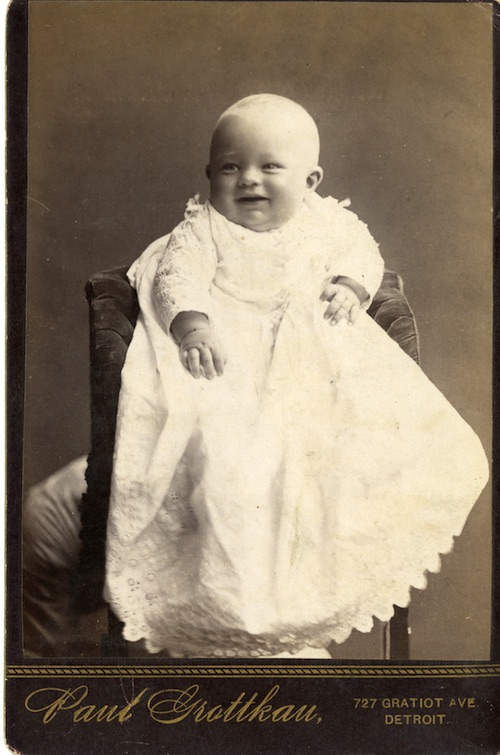
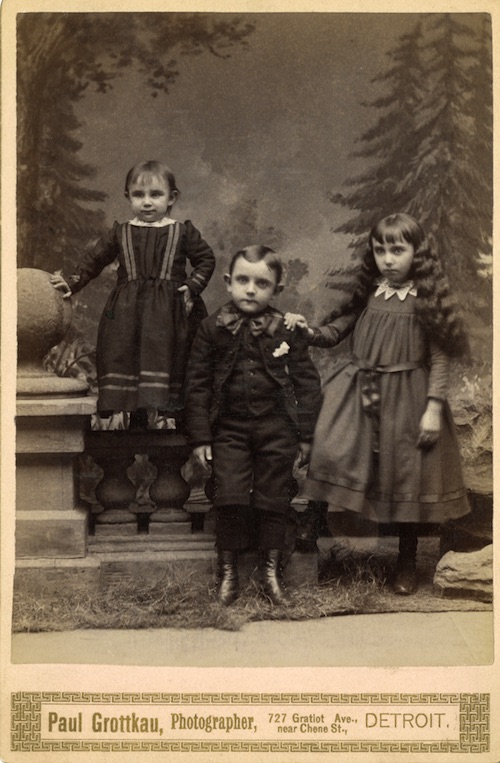
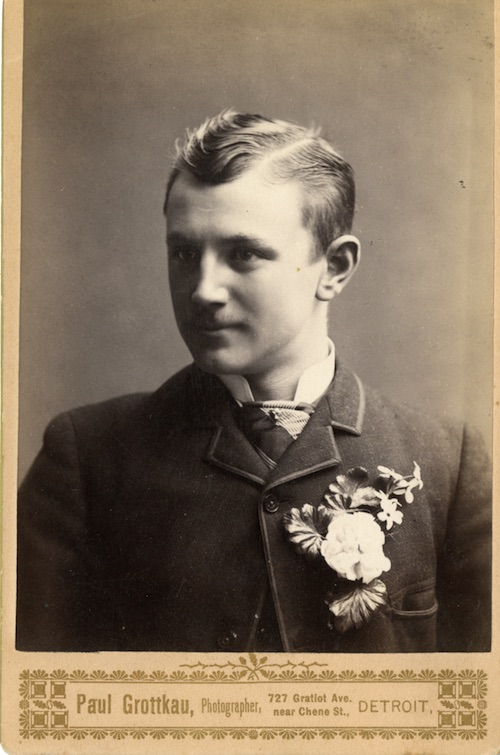
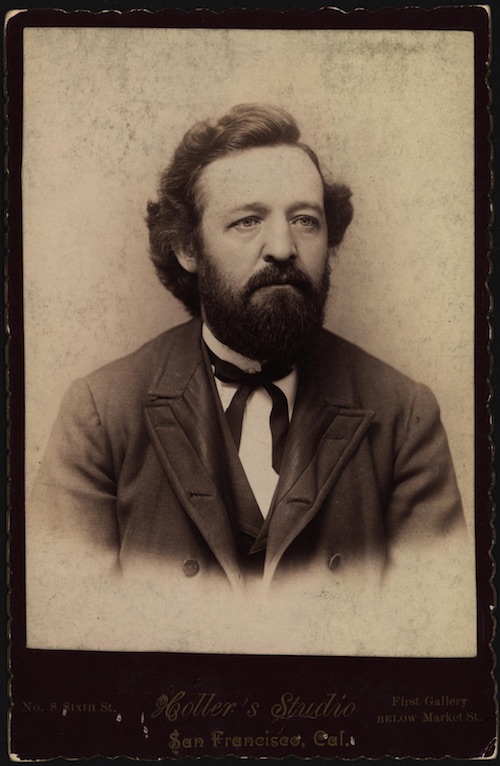




At his blog Re-photo, the dependably thoughtful Peter Marshall has published a considered response to the first part of this series, including evidence that the influence of Lucy Parsons, Grottkau’s subject, has extended not only to the U.K. but into the present. Recommended.
Many thanks to Peter Marshall for his photos of demonstrations in London that highlight Lucy Parsons. In 1889, she visited the UK as a guest of William Morris, met with leaders of the British Socialist and labor movements and lectured around the country. That her words are still compelling in today’s Great Britian is a tribute to this remarkable American woman.